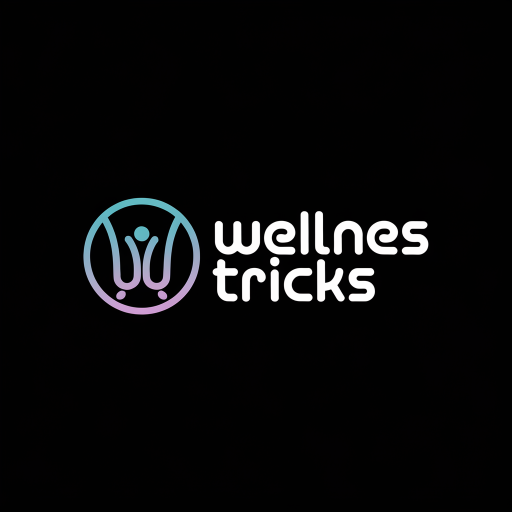What Your Nails Say About Your Overall Health
Your nails can tell you a lot about your health, often serving as a window into your nutritional status and potential underlying issues. Have you noticed any changes in their color or texture? These signs may indicate more than just cosmetic concerns. By understanding what your nails reveal, you can take proactive steps towards better health. Let’s explore the connection between nail health and what it might mean for your overall well-being.
The Connection Between Nail Health and Nutrition
When you consider your overall health, it’s easy to overlook the significance of your nails. However, they’re essential indicators of your nutritional status.
Nail health signs, such as brittleness or discoloration, can reveal deficiencies in vitamins and minerals. For instance, a lack of biotin may lead to weak, peeling nails, while iron deficiency could cause spoon-shaped nails. Additionally, nail appearances can indicate underlying health conditions, such as fungal infections or systemic diseases.
A balanced diet rich in proteins, vitamins A, C, D, and minerals like zinc is crucial for maintaining strong and healthy nails.
Common Nail Problems and Their Health Implications
Yellow nails, brittle nails, and white spots can signal underlying health issues that you shouldn’t ignore.
These conditions often reflect nutritional deficiencies or other systemic problems affecting your body.
Understanding what these nail changes could mean is crucial for maintaining both your nail and overall health.
Yellow Nails Indications
While many people overlook the condition of their nails, yellowing can signal underlying health issues that deserve attention.
If your nails turn yellow, it may indicate a fungal infection, which often requires medical treatment. Yellow nails could also point to respiratory problems, such as chronic bronchitis, or even liver diseases.
Smoking can contribute to yellowing as well, affecting both your nails and overall health.
It’s essential to monitor any accompanying symptoms, like pain or discoloration changes, and consult a healthcare professional if you notice persistent yellow nails.
Early intervention can help address potential health concerns effectively.
Brittle Nails Causes
Brittle nails can be more than just a cosmetic concern; they often point to underlying health issues that need your attention.
Several factors contribute to brittle nails, including nutritional deficiencies like biotin, iron, or zinc. Dehydration is another culprit, as inadequate moisture can weaken your nails.
Environmental exposure to harsh chemicals, frequent handwashing, or excessive nail polish use may also play a role. Additionally, medical conditions such as hypothyroidism or psoriasis can lead to nail brittleness.
If you notice persistent problems, consider consulting a healthcare professional to identify potential causes and appropriate remedies for healthier nails.
White Spots Meaning
You might have noticed white spots appearing on your nails, and these can be more than just surface blemishes. Often, they’re caused by trauma or injury, but they may also indicate nutritional deficiencies or other health issues. Here’s a quick guide to help you interpret what those spots could mean.
| Cause | Explanation |
|---|---|
| Trauma | Injury to the nail matrix can cause spots |
| Zinc Deficiency | Lack of zinc may lead to white spots |
| Fungal Infection | Can result in discoloration and spots |
| Allergic Reaction | Nail products may trigger an allergic response |
Keep an eye on your nails for further changes!
How Nail Changes Might Indicate Systemic Issues
Your nails can reveal a lot about your overall health, including color changes that might signal underlying issues. Texture and shape transformations, like ridges or clubbing, often indicate systemic problems that warrant attention. Recognizing these signs early can help you address potential health concerns more effectively. Additionally, strengthening your nails through natural methods, such as dietary adjustments and DIY treatments, can also reflect your overall health.
Color Changes Indicators
While it may be easy to overlook the color of your nails, these changes can serve as important indicators of systemic health issues. Awareness of these color shifts may help you catch potential problems early.
Pay attention to the following signs:
- Pale or white nails: Could signal anemia or liver issues.
- Yellow nails: Often indicate fungal infections or respiratory conditions.
- Blue nails: Suggest low oxygen levels or circulatory problems.
- Red streaks: May point to an underlying infection or inflammation.
- Dark lines: Could signify melanoma, requiring immediate evaluation.
Monitoring your nails can provide vital insights into your overall health!
Texture and Shape Transformations
Color changes aren’t the only indicators of potential health issues; the texture and shape of nails can also reveal important information about systemic conditions.
For instance, if your nails become unusually brittle or ridged, it may signal thyroid problems or nutritional deficiencies. Nail clubbing, where nails appear wider and curved, could indicate respiratory or cardiovascular issues. Conversely, spoon-shaped nails might suggest iron deficiency anemia.
Changes in nail shape or texture shouldn’t be overlooked; they often herald underlying health concerns. Regular self-examination can help you catch these changes early, allowing for timely medical consultation and intervention.
The Role of Hydration in Nail Strength and Appearance
Hydration plays a crucial role in maintaining the strength and appearance of your nails. When you’re properly hydrated, your nails are less likely to become brittle or split.
Here are some key benefits of staying hydrated for nail health:
- Supports overall nail growth
- Prevents dryness and breakage
- Enhances nail flexibility
- Promotes a healthy shine
- Reduces the risk of hangnails
To keep your nails looking their best, drink plenty of water and consider incorporating moisturizing lotions.
Recognizing Signs of Fungal Infections Through Nails
How can you tell if your nails are warning you of a fungal infection? Look for these key signs:
| Symptoms | Description |
|---|---|
| Discoloration | Your nails may turn yellow, brown, or white |
| Thickening | Nails might become thicker and distorted |
| Crumbling or Breaking | Edges may start to break or crumble easily |
If you notice any of these symptoms, it’s time to consult a healthcare professional. Early detection is crucial in treating fungal infections effectively. Don’t ignore the warning signs, as they can lead to more serious health issues if left untreated.
The Importance of Regular Nail Care for Overall Well-Being
Recognizing the signs of fungal infections through your nails is just the beginning of understanding nail health.
Regular nail care is essential for your overall well-being. By maintaining healthy nails, you can prevent infections, improve hygiene, and enhance your appearance.
Consider these key practices:
- Keep nails trimmed and clean
- Moisturize cuticles to prevent dryness
- Avoid biting or picking at nails
- Choose breathable nail products
- Schedule professional manicures occasionally
These simple steps ensure your nails reflect good health, helping you feel more confident while also safeguarding against potential health issues. Additionally, an often overlooked nail care secret is the importance of using quality moisturizers to keep your nails and cuticles hydrated.
Prioritize your nail care; it benefits both your appearance and health.

